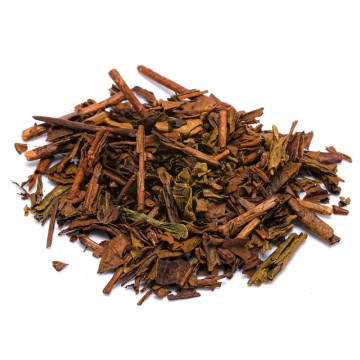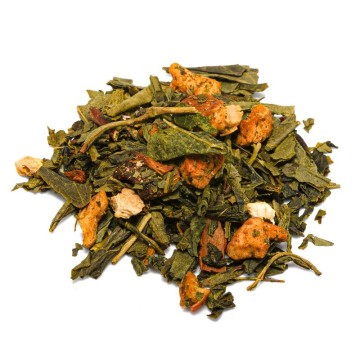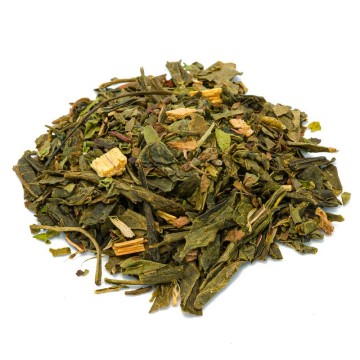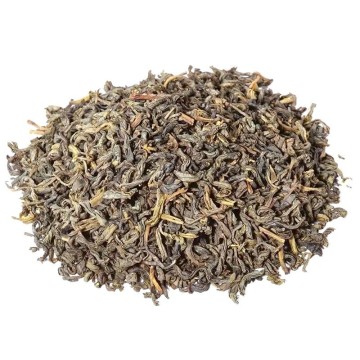Sencha decaffeinated green tea with bergamot
This aromatic and refreshing tea is highly appreciated for its scent and balsamic qualities on the respiratory system. A blend that combines Sencha green tea, from the Japanese tradition, with citrus components, substances that give a special aroma and flavor to the infusion. The essence of this delicate and floral green tea becomes energizing, stimulates the mood in a pleasant way and evokes the freshness of fruits. A green tea that also has virtues useful for the well-being of the body, thanks to the antioxidants it contains.
Properties and benefits
Combining citrus peels with green tea results in a refreshing drink rich in antioxidants. Perfect thirst-quencher for hot summer days, and useful in winter for its soothing properties on the respiratory tract. The naturally occurring antioxidants in green tea are enhanced with the addition of terpenes and other vital nutrients. Decaffeinated green tea with bergamot is an elixir rich in beneficial substances, in particular vitamin C, which supports the body's immune system and skin well-being. Green tea is already rich in antioxidants, enhanced by those of citrus fruits also to ward off the effects of colds and coughs.
It protects the respiratory tract with soothing and balsamic effects, and helps counteract the effects of colds or irritation of the respiratory tract. Thanks to the biomolecules of terpenes and the lack of theine / caffeine, this blend represents a relaxing green tea, which decreases stress and can give a pleasant touch of good mood with its aroma. At the digestive level, citrus fruits and tea help the well-being of the stomach, relieving the conditions that lead to gastroesophageal reflux and heartburn in the digestive system. The infusion promotes a well-being situation that opposes irritation: polyphenols such as EGCG (the compound epigallocatechin gallate) help reduce inflammation of the gastrointestinal tract. They can favor conditions of contrast to intestinal gas, flatulence and heartburn after meals.
The citrus substances facilitate the absorption of catechins in the stomach and intestines, avoiding their degradation. An advantage, given that catechins are the main healthy compound present in tea, studied for its possible actions on our body (antioxidant, hepatoprotective, immunostimulant, help in blood pressure control). In addition, bergamot tea is able to facilitate diuresis, with detoxifying effects to eliminate toxins from the body. Bergamot green tea can promote the beauty and well-being of the skin, thanks to the antioxidant vitamin C, which is important to include in the diet. In an anti-aging function, the polyphenols contained in green tea and citrus peels act as antioxidants, protecting cells from damage caused by oxidative stress, age and various external factors (pollution, foods that cause inflammation, alcohol, etc. .).
This decaffeinated Sencha green tea with bergamot is a good substitute for sugary drinks, as a thirst-quencher, since it gives a satisfying sensation on the palate, without the need for sweetening. An important note of this drink is that it is decaffeinated green tea, without theine / caffeine. This natural alkaloid is present in tea in a lower concentration than coffee or other plants; in any case, this tea has been deprived of it and does not show the typical side effects of theine (anxiety, nervousness, headache, etc.). The mix of decaffeinated green tea and bergamot is an excellent infusion to drink before going to sleep, without risking insomnia.
Origins and History of cultivation
Japanese Sencha tea is an infusion born and appreciated in Japan - although there is Chinese Sencha tea. All the teas come from the same plant, the Camellia sinensis, native to Asia, particularly in the area between Tibet, Yunnan, Guizhou, Hunan and Sichuan. Soon spread throughout the Asian, Southeast Asian and Indian continents, this plant also arrived in Japan, brought by Buddhist monks who had traveled to China. According to historical sources, tea was first introduced to Japan in the 12th century. It was only 500 years later, however, that the Sencha procedure began to be widespread. In the 17th century, Japanese tea culture embraced the processing of the leaves by cooking, whereas before then, the favorite tea across the country was matcha. Since then, Sencha has rapidly caught on in the country.
The difference between different types of tea, including green tea, isin how the tea plant is grown, harvested and processed. Japanese Sencha tea is grown in full sun, and the leaves undergo a first and second harvest, along with the more delicate buds. The tea from the first harvest in spring is called Shincha and is considered the finest of the Sencha. The drink comes from the processing of the leaves, in which the oxidation process through steam cooking is soon blocked.
This procedure gives a different flavor from other types of tea, and keeps the plant's antioxidants. After cooking, the leaves are rolled up and shaped into a cylindrical shape, to then be dried. The final phase of making Sencha is sorting. The highest quality Sencha leaves are separated, for the premium tea. In its various qualities, it is the most widespread in the Japanese tea industry, given that around 60-80% of all tea produced in Japan is Sencha.
Plant and flowers
Camellia sinensis is the plant used to produce tea, from the leaves and buds. It belongs to the genus Camellia, flowering plants of the Theaceae family. All types of tea are derived from this species, but are processed differently to achieve different levels of oxidation. There are two main varieties used for tea: Chinese tea, Camellia sinensis var. sinensis, and Assam tea, Camellia sinensis var. assamica. Today it is grown all over the world in tropical and subtropical regions, on soils up to 1,500 meters (at high altitudes the plants grow more slowly and acquire more flavour).
It grows as a shrub or small evergreen tree which, usually cut to less than 2 meters in height – to facilitate the collection of leaves. It shows a tap root, the flowers are white-yellow, the leaves are light green, with short white hairs on the underside; the seeds which can be pressed to obtain the tea oil. The fresh leaves and buds are harvested for tea production when they are young, but also at other stages.
Different leaf ages produce different tea qualities – the chemical composition changes.
Nutritional values of decaffeinated Sencha green tea with bergamot
This green tea makes available antioxidant biomolecules and substances such as the amino acids theanine and arginine. In addition, green tea is a good source of vitamins A, C, E and many of the B vitamins. It provides elements such as caffeic and chlorogenic acid, polyphenol catechins polyphenol catechins (epigallocatechin-3-gallate EGCG, epigallocatechin EGC, epicatechin EC), and mineral salts (calcium, copper, iron, magnesium, phosphorus, potassium).
The parts of the citrus peel insert nutrients and substances including vitamin C, terpenes, citric acid into the drink , malic acid and pectins. How to prepare decaffeinated Sencha green tea with bergamot The infusion is obtained by placing about 3-5 grams of the blend of decaffeinated green tea with bergamot in a cup (250 ml). Water at a temperature of 80 °C. Leave to infuse for 2 to 3 minutes, before drinking the green tea infusion.
Sencha decaffeinated green tea with bergamot: side effects and contraindications
Green tea is safe to consume, as long as it is not exceeded in quantities. The effects of drinking decaffeinated tea could include headache, dizziness, itching; on the other hand, there is no risk of contraindications relating to caffeine (not present). In the case of iron deficiency, the catechins in green tea can inhibit its absorption into the body. If you already suffer from anemia, it is advisable to moderate the intake of green tea, even if the Vitamin C content of the citrus components mitigates this contraindication.
Tea contains tannins which, taken in excess, can cause an increase in gastric acids, causing symptoms such as nausea, heartburn. The union with citrus fruits could cause excessive acidity and sensation of throat irritation in excessive doses. Caution is advised when taking green tea, even during pregnancy and breastfeeding.

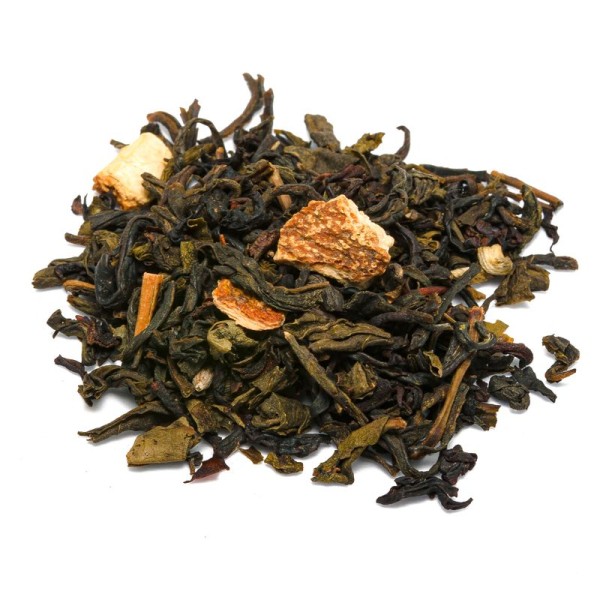

 No reward points for this product.
No reward points for this product.
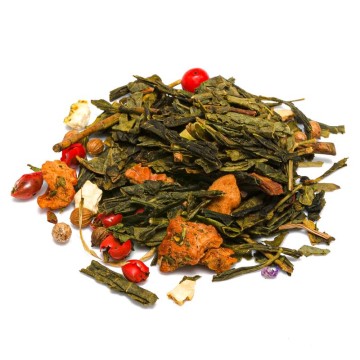
![Ginseng and ginger green tea [Natura d'Oriente]](https://www.naturadoriente.com/3367-home_default/Green-tea-ginseng-ginger.jpg)
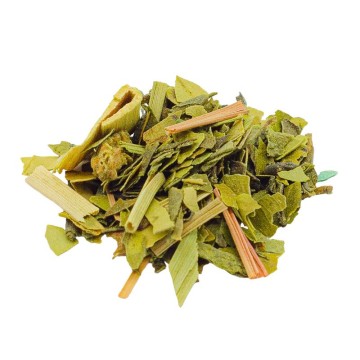
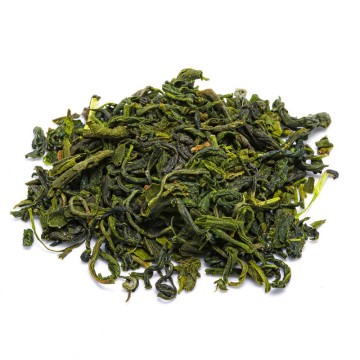
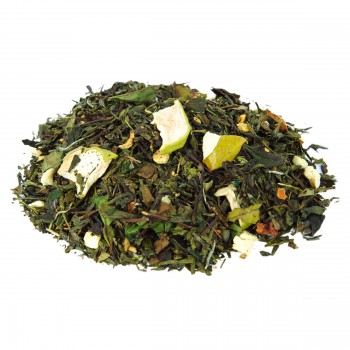
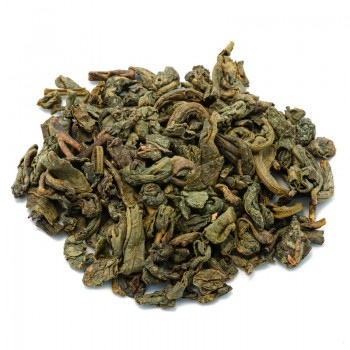
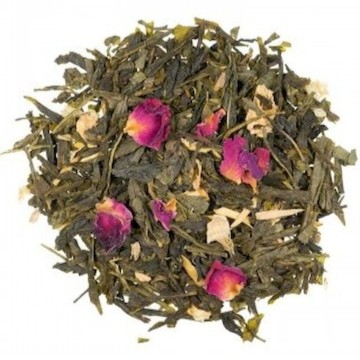
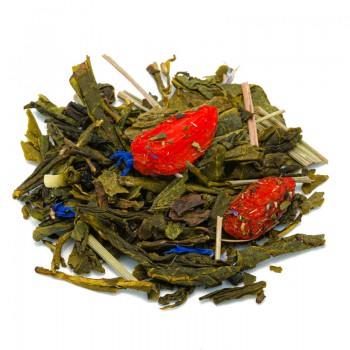
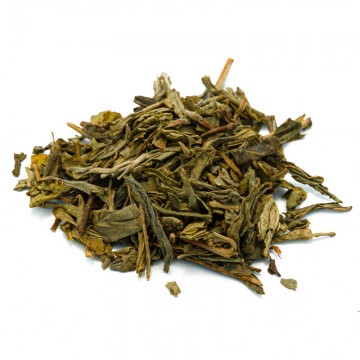
![green tea roasted almond [Natura d'Oriente]](https://www.naturadoriente.com/3366-home_default/green-tea-with-roasted-almonds.jpg)


